
What can you call a hobby which teaches so much—in addition to providing fun and pleasure? Stamp collecting helps instruct the collector in geography, biography, history, culture and art. Stamps are miniature gateways to the world.
Stamp collecting has very few rules. You don't have to buy expensive sneakers or rackets to enjoy it. However, there are a few simple things to remember when collecting stamps.
Which Stamps to Collect?
First of all, one of the essential rules to remember is that the condition of a stamp is a highly important consideration. Badly torn and mis-handled stamps are not only unpleasant to the eye, but they are worth next to nothing when compared to their undamaged counterparts. Try to acquire the finest possible specimens. Stamps are rated in condition from poor to superb.
A stamp which can be called "superb" is one of the finest quality. That means it has perfect centering, brilliant color and perfect gum. A used stamp can also be called superb, if it is perfectly centered, fresh looking, is lightly cancelled and undamaged.
A designation of fine means a stamp without flaws, average centering, gum with light hinge marks. Used stamps designated "fine" are not quite as fresh, cancels are heavier and centering is good.
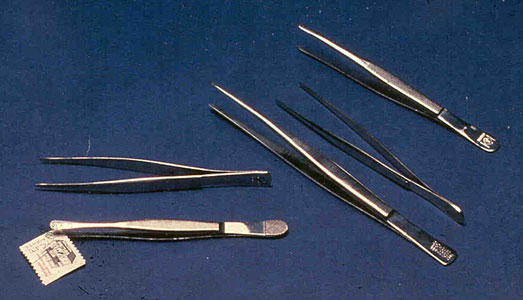
Stamp tongs come with differently shaped tips, but they all have smooth ends which you can use to pick up a stamp without damaging it.
"Good" stamps are those which are off-center, but fairly attractive. There may be minor defects such as disturbed gum, thin areas, heavy hinge marks. Stamps which fall below these standards should be ignored and are not worth acquiring by the serious collector; however beginners sometimes collect them as starters. These are known as "space fillers".
Because their condition is so important -- and stamps are only bits of paper after all -- when handling them it is essential to remember to use caution. The best way to safely handle stamps is with tongs.
Because stamps are small, it is often difficult to see all of their minute detail with the naked eye. Magnifying glasses, which come in a variety of shapes and sizes, will help you not only see the design better, but also, in some instances discover small details which can help distinguish one stamp from another. You'll soon learn that there are times when stamps appear to be the same, but are not.
Look-alike stamps frequently turn stamp collectors into Sherlock Holmes! Sleuthing is fun and a test of your knowledge and skill.
Soaking Stamps
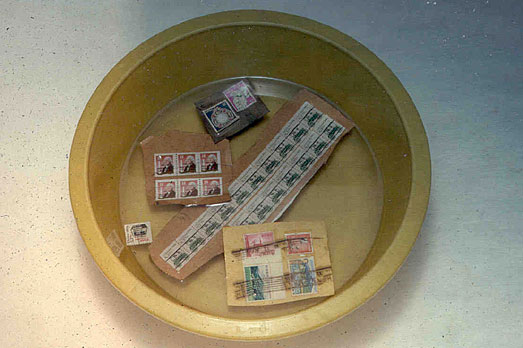
You can always find stamps in your own mail box, or you can ask a local business to let you have stamps from their mail. But when you want to remove a stamp from an envelope, you will need to soak the stamp off. When you soak stamps off of the remnants of envelopes, all you really need is a container to hold the cool water while the stamps soak. It's best to let the stamps soak for perhaps 15 to 20 minutes, sometimes more depending on the quality of the paper and gum which is used. You can tell when the stamps are ready to be handled, they will float free from the envelopes. Not all stamps soak well. If you have stamps with purple ink or cancellations on them, you may want to soak them separately, because these colors may run, discoloring other items in the container. Others may require separate attention because of colors which may run from the envelopes on which the stamps were affixed.
Even more information about your stamps can be found by using handbooks. Many times information that can be found nowhere else can be found in a handbook. Hundreds of different philatelic handbooks can be borrowed through your local library. If the library does not have the book, you can request that they order it for you through inter-library loan from the National Philatelic Collection.
If you are unsure about what area of collecting you would like to concentrate on, you may want to consult a beginning collectors book. These "how-to-books" can be purchased or ordered through a local stamp dealer or bookstore, or you may find them at your local library.
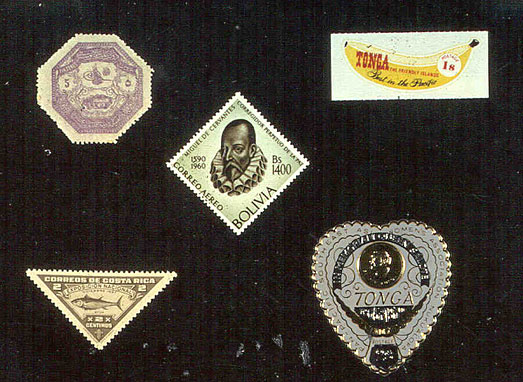
Because one of the first things you will learn through collecting stamps of other countries is geography, you may want to get an atlas, globe or world map to help you see where the country is located, or to help locate countries which issued stamps you have in your collection. Several stamp atlases have been published for philatelists; they show "dead" countries that formerly issued stamps, as well as current nations.
Sometimes, collectors decide to collect stamps not by country of issue, but because of something else. There are people who collect stamps that are oddly shaped, or items that aren't technically stamps, such as labels and seals. These are commonly called cinderellas (because they appear to be something they're not).
Some people collect revenue stamps, which are used by the country of issue to tax items. Many more people collect stamps according to topic, such as animals, like birds, or fish, people on stamps, such as authors or scientists, or sport scenes, flowers, art or crafts, the list of stamp collections by topics is practically endless.
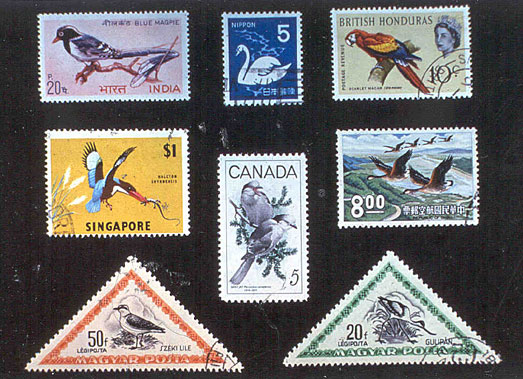
If you have decided to collect according to a country, topic, or any other area of stamp collecting that you want to concentrate on, you may want to keep in touch with others who are collecting the same way. There are numerous specialized stamp clubs locally or nationwide. Many of these clubs can be found through web searches using the terms "stamps" and your collecting topic.
Often when a club has members around the country, the only way for them to keep in touch with each other is through a magazine, newsletter, or bulletin. You may want to subscribe to a philatelic magazine that covers your interests. There are stamp journals which let you know what is going on in the field in general, and keep you up to date on new discoveries. There are stamp journals which are devoted to studying and describing stamps and covers.
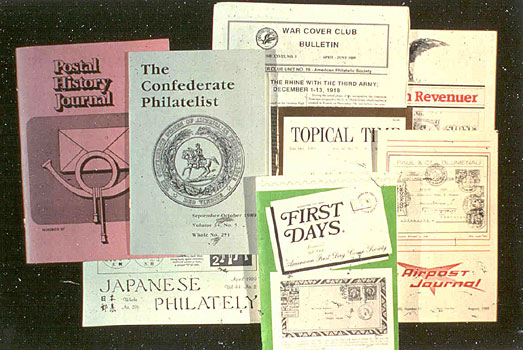
Whatever area of collecting you wish to collect in, there is an enormous amount of information available to help you enjoy your hobby. The best place to start is a local stamp club. You've probably already made that first step, now you can try and decide which kinds of stamps or envelopes you'd like to collect and which materials you'll need to help you. Good luck, and remember—enjoy yourself, because the main reason for collecting stamps is for the fun of it!
